|
Part 1 | 2 | 3 | 4 | 5 | 6 | 7 | 8 | 9 | 10 | 11 | 12 | 13 | 14 | 15 | 16 | 17 | 18 | 19 | 20 | 21 | 22 | 23 | 24 | 25
During the 1990s, a few years before my father, Dave, passed away in December of 2000, he wrote a 35-page autobiography. Excerpts from it will be published here, as companions to the diaries my mother, Dorothy, kept in 1945 and 1946—the year she met Dave. My dad was born in 1927, in Hamilton, Ohio. The family eventually moved to the south side of Chicago.
Part 1
Summer, 1933
I am six years old. Looking out of my bedroom window, on the front side of our third floor Chicago “flat,” I see the Sky Ride of the Chicago World's Fair.
This, then, is the first recollection I have of my place in the world.
I am in a red Mack truck, atop a seat of smooth leather. The truck has open sides, and I can hear the sound of a chain underneath, driving the rear wheels. On the sides are the words, “Great Atlantic and Pacific Tea Co.” Next to me is a large, tall man with black hair and rolled-up sleeves. His big hands grip the steering wheel. This man is Michael, my father. He delivers groceries to the A&P stores in our neighborhood.
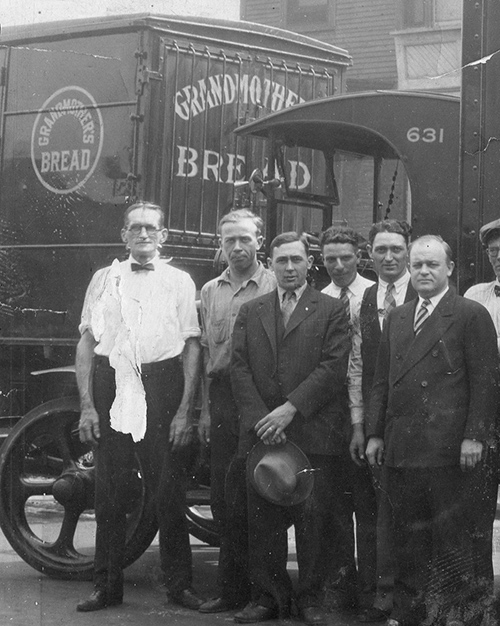
David's father, Michael, at far left.
I'm standing in the A&P parking lot, when my dad's truck pulls up. He holds my hand. In his hand is a pack of cigarettes with an illustration of a race horse. “Twenty Grand,” it says, underneath the picture.
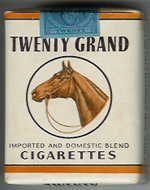 Before walking home, we stop at a tavern, where he places me atop a high barstool. It's a dark place, filled with the smell of liquor and hard-boiled eggs. From behind the bar, a man hands me a glass. I drink, but the bubbles get in my nose. “This is my son, David,” my dad says to the bartender. They pat my back as we leave for home. Before walking home, we stop at a tavern, where he places me atop a high barstool. It's a dark place, filled with the smell of liquor and hard-boiled eggs. From behind the bar, a man hands me a glass. I drink, but the bubbles get in my nose. “This is my son, David,” my dad says to the bartender. They pat my back as we leave for home.
Home is on the south side of Chicago. 39th Street and Normal Boulevard. The A&P warehouse was right next door, and the aroma of A&P's Eight O'Clock and Bokar coffee beans lives within my soul to this very day.
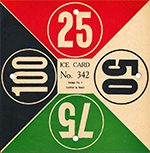 In the front window of our home is a sign my mother, Edith, has placed there. “Iceman,” it reads, with the numbers “25 - 50 - 75 - 100” on the edges, informing the delivery person of what size of ice block to bring us. My older brother, Charlie, and I, like to talk to and pet the horse that pulls the Iceman's wagon. He has a device made of leather slung over one shoulder, and uses it to carry the blocks. We like to steal a few chunks of ice now and then, after he's walked away. In the front window of our home is a sign my mother, Edith, has placed there. “Iceman,” it reads, with the numbers “25 - 50 - 75 - 100” on the edges, informing the delivery person of what size of ice block to bring us. My older brother, Charlie, and I, like to talk to and pet the horse that pulls the Iceman's wagon. He has a device made of leather slung over one shoulder, and uses it to carry the blocks. We like to steal a few chunks of ice now and then, after he's walked away.
On Saturdays, Charlie and I walk to the Chicago Stock Yards, home to packers like Armour and Swift, a mile or two away on busy Halsted Street. We visited here often, and sometimes toured the cattle house where we saw them come up a wooden chute into a room where a big man would strike the cow on its head with a maul.
Chains were put around their backs as they were hoisted onto a railhead down below. Another man slashed their throats, blood spilling all over the floor. We saw carcasses being skinned and cut up.
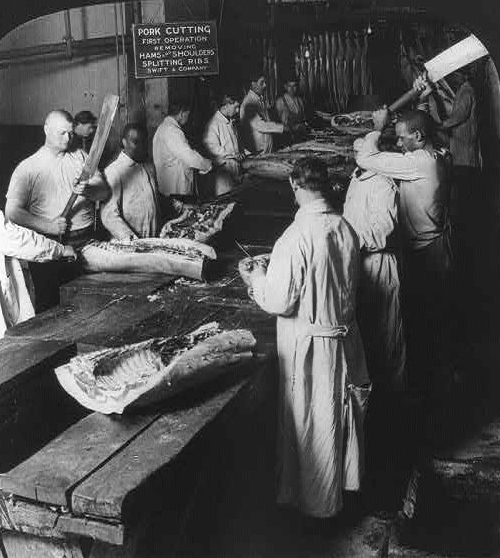
The Chicago Stock Yards
In the bacon room, we would enjoy the smells, and gazed at women wearing white hats as they worked with big slabs of bacon. The sawdust-strewn rooms were very cold, and then wore long, white coats. Outside, walking among the pens, we'd see cowboys on hourses tending sheep.
Kidneys, liver, neck bones, pig tails, pigs feet, or fat and bacon rinds—anything available that the packing house is unable to sell—was ours for the asking. A butcher wrapped our swag in white paper, and we'd haul our treasures back home in bags that were very heavy for us little kids.
Once we've brought our treasures home, we are back outside, walking alongside the nearby railroad tracks. Coal sometimes falls from the tender. That is what we're looking for. Coal for our stove and our heat. We've brought along a bucket. On a particularly lucky day, it fills up and we have to struggle to carry it back to the house.
We lived in an Irish neighborhood. The Stock Yards were to the west, and to the east, at State Street, lived the “colored people,” as many whites would say in those times. The railroad tracks along Wentworth St. were a sort of dividing line. We knew not to go east of there, and “they” didn't cross that “barrier” to go west.
* * *
It was in July or August of 1933 that both my father and I contracted pneumonia, and were put under a doctor's care at Michael Reese Hospital. I later found out that the doctor informed my mother that my dad and I would likely succumb to the disease, but that there was hope—for one of us. It was possible for a new, experimental sulfa drug to be administered, but only to one of us. Mom needed to make a choice. She chose me. My father died.
I was told, a couple of days after his passing, that I should keep very quiet inside the house. Normally, the sliding doors leading to the living room—the doors with wavy, polished lines—remain open all the time. On this day, however, they are closed.
There's a flowery aroma emenating from that room, and I'm aware that a lot of people are inside it. Later on, when everyone has left, I slide open the doors and walk inside, to look at my father in his coffin. His casket is on wheels, atop a sort of platform. A priest is standing there, as puffs of a white smoke come out of an urn he is waving to and fro. It is all so strange to me.
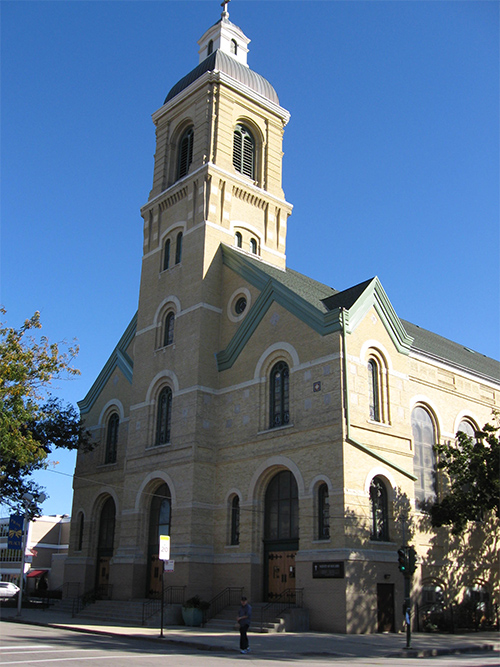
Nativity of Our Lord Catholic Church.
* * *
End of Part 1
Part 1 | 2 | 3 | 4 | 5 | 6 | 7 | 8 | 9 | 10 | 11 | 12 | 13 | 14 | 15 | 16 | 17 | 18 | 19 | 20 | 21 | 22 | 23 | 24 | 25
|

